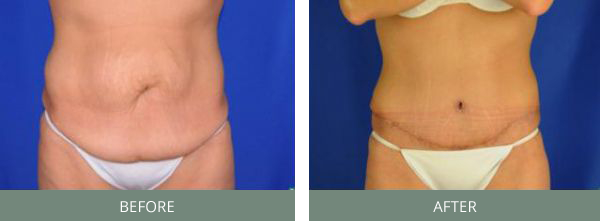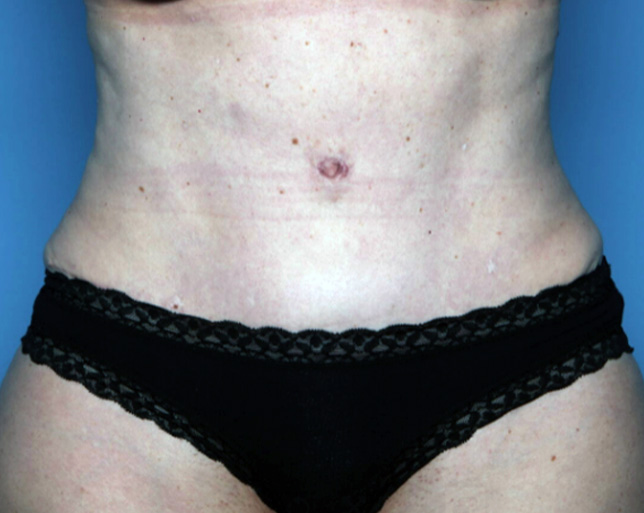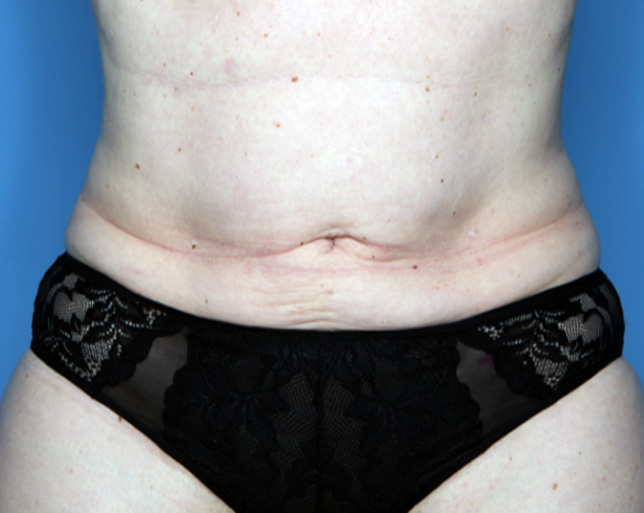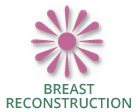BREAST AUGMENTATION INCISION PLACEMENT
Breast augmentation incisions are placed in inconspicuous locations so that any scarring from the surgery will be barely noticeable. Many factors help determine the best location for breast augmentation incisions, including the specific type of breast implant (saline or silicone gel), the size and shape of the implant, the unique anatomy of the patient, and individual preferences of the patient or surgeon. In general, patients have three common choices for their breast augmentation incision placement:
- Inframammary Approach
- Areolar or Periareolar Approach
- Transaxillary Approach
At West County Plastic Surgeons, board-certified plastic surgeons Dr. Terry Myckatyn and Dr. Marissa Tenenbaum understand that making the right decisions about breast enhancement surgery is very important. They make sure that each patient fully understands her alternatives, as well as the advantages and disadvantages of all options, so that she can feel confident that the results of her breast enhancement surgery will meet or exceed her expectations.
If you have questions about breast augmentation or are ready to schedule a consultation, contact our St. Louis office by phoning (314) 996-8800, requesting your consultation online, or emailing us today.
Breast Augmentation Incision Placement: Options for St. Louis Patients
For breast enhancement surgery, patients have three main options regarding the placement of their incisions. Each alternative has its pros and cons, which are briefly explained below.
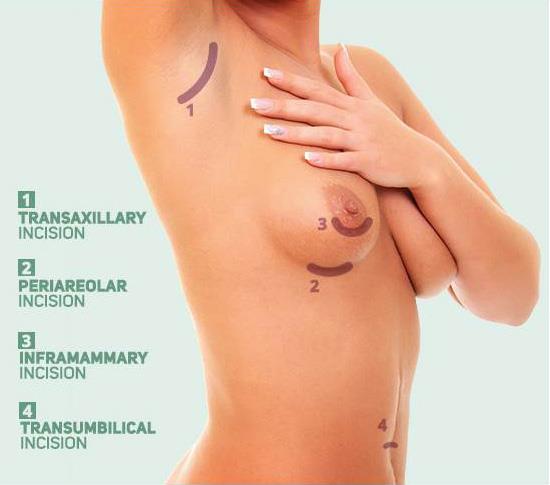
Because each patient has unique anatomy and aesthetic goals, there is not a single approach to breast augmentation at St. Louis’ West County Plastic Surgeons of Washington University. One of the customized choices a woman will make with the doctor is incision placement. Breast augmentation specifics, including style and type of implant, will help to determine the best place for an incision. Options include transaxillary incision, which is made in the armpit; periareolar incision, which runs along the line between the dark-colored areola and the lighter surrounding skin; inframammary incision, which sits in the crease below the breast; and transumbilical incision, which allows the surgeon to insert an implant via the navel. Each of these incisions is designed to accommodate an implant while hiding any resulting breast augmentation scars. Keep in mind that not every incision location is available for every type of implant. Your surgeon will discuss the options, as well as the various benefits of each, at the time of your breast augmentation consultation. Placement factors include whether the implant is filled with silicone or saline, whether the implant will be placed above or below chest muscles, the size of the implant, the size and shape of the pre-augmentation breast, and more.
Inframammary Incision
The inframammary approach, often called the crease incision, is the most common approach for breast enhancement surgery. The opening is created in the crease under the breast, called the inframammary fold, where the breast meets the chest wall. In most women, breasts of even moderate volume will conceal this crease, so it can serve as an ideal location for breast enhancement surgery. The surgeon creates an opening along the fold under the breast, forms a pocket, and then places and positions the implant.
- Inframammary Incision Advantages. Many plastic surgeons prefer this approach because it allows for greater control, enabling extremely precise positioning of the breast implant. Many patients prefer it because they can easily conceal the scar, the procedure does not affect nipple sensation, and they do not have to worry about whether they will experience breastfeeding complications after the surgery. Finally, the inframammary approach can be reused for subsequent breast surgeries, if needed.
- Inframammary Incision Disadvantages. The main drawback of the inframammary approach is that the scar can be visible, especially when lying down.
Areolar or Periareolar Incision
This approach involves placing an incision around the entire darker outer edge of the nipple (areolar), or a semi-circle on the lower half of the nipple (periareolar). The implant is then inserted through the opening and placed into position.

Dr. Terry Myckatyn and
Dr. Marissa Tenenbaum:
Trusted. Experienced. Committed.
- Areolar or Periareolar Incision Advantages. The benefits to this kind of approach are numerous: the openings are typically small and heal well, creating a well-concealed or nearly invisible scar that blends in with the color and texture variations of the nipple itself. Any remaining scar tissue is visible only without clothing. Also, because of the central location, during surgery the surgeon can easily and precisely position each implant so that it is placed in the most attractive location. Finally, future breast surgeries can be performed from the same opening.
- Areolar or Periareolar Disadvantages. In spite of the many benefits of the periareolar approach, it does have some drawbacks. For one, it is not appropriate for patients with very small nipples. Also, it can complicate breastfeeding because the surgery involves the milk ducts on each breast. And because the periareolar incision severs nerves in the area, it can lead to decreased sensation in the nipple. Finally, in the unlikely event that a scar does not heal well, it can be raised, discolored, and quite noticeable.
Transaxillary Incision
The transaxillary approach requires placing an incision in the crease of the armpit. For women who have not had prior breast enhancement, do not need a breast lift, and prefer a saline implant, this can be an optimal breast augmentation incision placement. The surgeon creates a small incision in the armpit and then forms a pocket in the chest wall for each implant. The implant is filled with saline after it has been placed in the chest pocket.
Before & After
Visit our Photo Gallery to see our patient results.
*Results may vary.
View Patient Results- Transaxillary Incision Advantages. Each breast augmentation approach has its pros and cons, and the transaxillary is no different. The pros are its well-concealed scars. In fact, many patients who choose this approach do so because they do not want any scarring on or near their breasts. They also do not have to worry about breastfeeding complications or loss of nipple sensation following surgery.
- Transaxillary Incision Disadvantages. The cons of this procedure relate to the fact that the surgeon cannot directly visualize or feel the breast tissue, resulting in less control and precision when placing the implant. In addition, some patients have noted that the armpit scar is visible when wearing sleeveless tops and can make shaving more difficult. Some women also lose sensation in the area surrounding the scar. Finally, this location cannot be reused for future surgeries.
If you are considering breast augmentation surgery, West County Plastic Surgeons encourages you to thoroughly consider the advantages and disadvantages of all of your surgical options well in advance. If you have questions or would like to schedule a consultation to come in and speak with one of our board-certified plastic surgeons, contact our St. Louis office by phoning (314) 996-8800, requesting your consultation online, or emailing us today.
If you have questions or would like to book a consultation with one of the surgeons at West County Plastic Surgery, please call (314) 996-8800.







